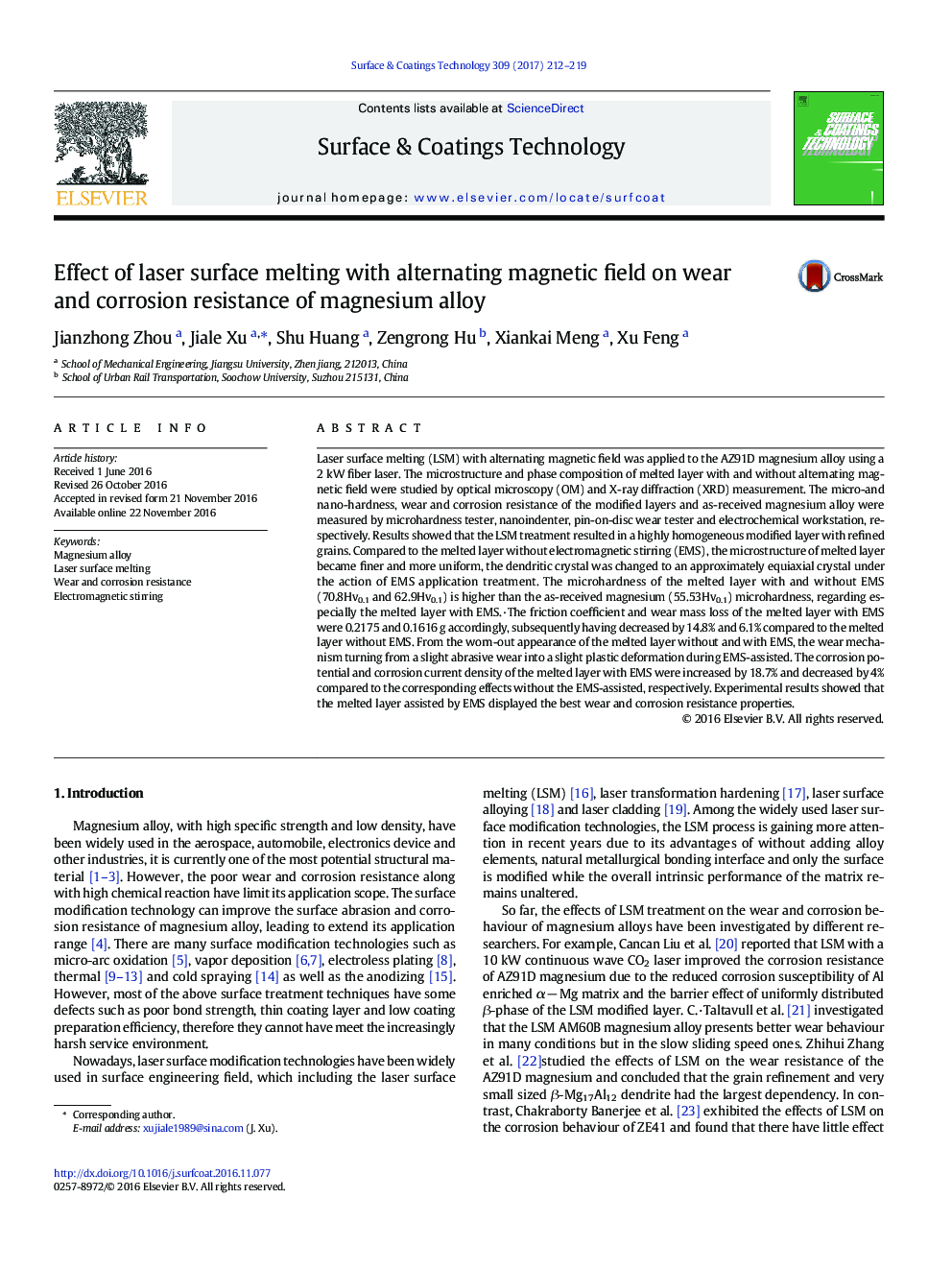| Article ID | Journal | Published Year | Pages | File Type |
|---|---|---|---|---|
| 5465254 | Surface and Coatings Technology | 2017 | 8 Pages |
Abstract
Laser surface melting (LSM) with alternating magnetic field was applied to the AZ91D magnesium alloy using a 2 kW fiber laser. The microstructure and phase composition of melted layer with and without alternating magnetic field were studied by optical microscopy (OM) and X-ray diffraction (XRD) measurement. The micro-and nano-hardness, wear and corrosion resistance of the modified layers and as-received magnesium alloy were measured by microhardness tester, nanoindenter, pin-on-disc wear tester and electrochemical workstation, respectively. Results showed that the LSM treatment resulted in a highly homogeneous modified layer with refined grains. Compared to the melted layer without electromagnetic stirring (EMS), the microstructure of melted layer became finer and more uniform, the dendritic crystal was changed to an approximately equiaxial crystal under the action of EMS application treatment. The microhardness of the melted layer with and without EMS (70.8Hv0.1 and 62.9Hv0.1) is higher than the as-received magnesium (55.53Hv0.1) microhardness, regarding especially the melted layer with EMS.·The friction coefficient and wear mass loss of the melted layer with EMS were 0.2175 and 0.1616 g accordingly, subsequently having decreased by 14.8% and 6.1% compared to the melted layer without EMS. From the worn-out appearance of the melted layer without and with EMS, the wear mechanism turning from a slight abrasive wear into a slight plastic deformation during EMS-assisted. The corrosion potential and corrosion current density of the melted layer with EMS were increased by 18.7% and decreased by 4% compared to the corresponding effects without the EMS-assisted, respectively. Experimental results showed that the melted layer assisted by EMS displayed the best wear and corrosion resistance properties.
Related Topics
Physical Sciences and Engineering
Materials Science
Nanotechnology
Authors
Jianzhong Zhou, Jiale Xu, Shu Huang, Zengrong Hu, Xiankai Meng, Xu Feng,
